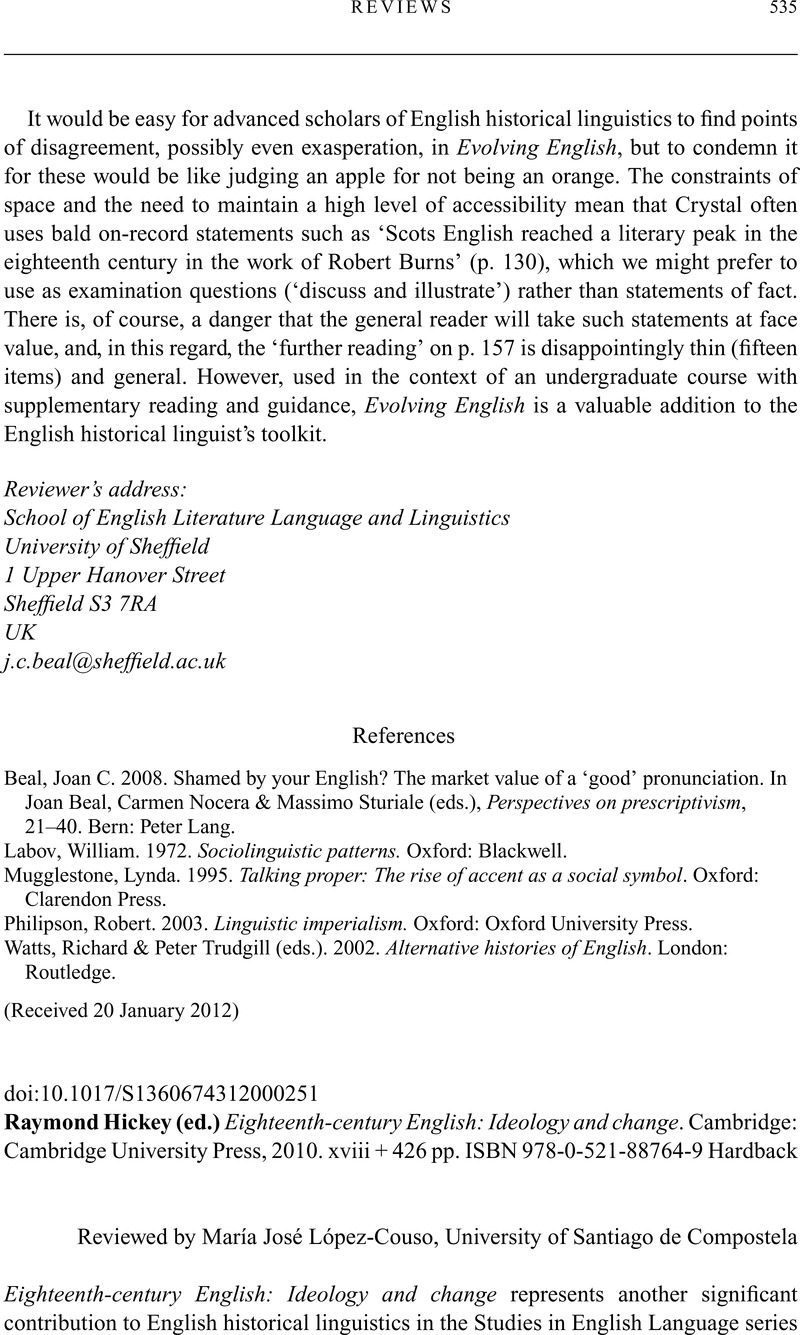Aarts, Bas,
López-Couso, María José &
Méndez-Naya, Belén.
2012.
Late modern English: Syntax. In
Bergs, Alexander &
Brinton, Laurel (eds.),
English historical linguistics: An international handbook (Handbooks of Linguistics and Communication Science (HSK) 34.2), vol.
2,
869–87.
Berlin and New York:
De Gruyter Mouton.
Google Scholar 